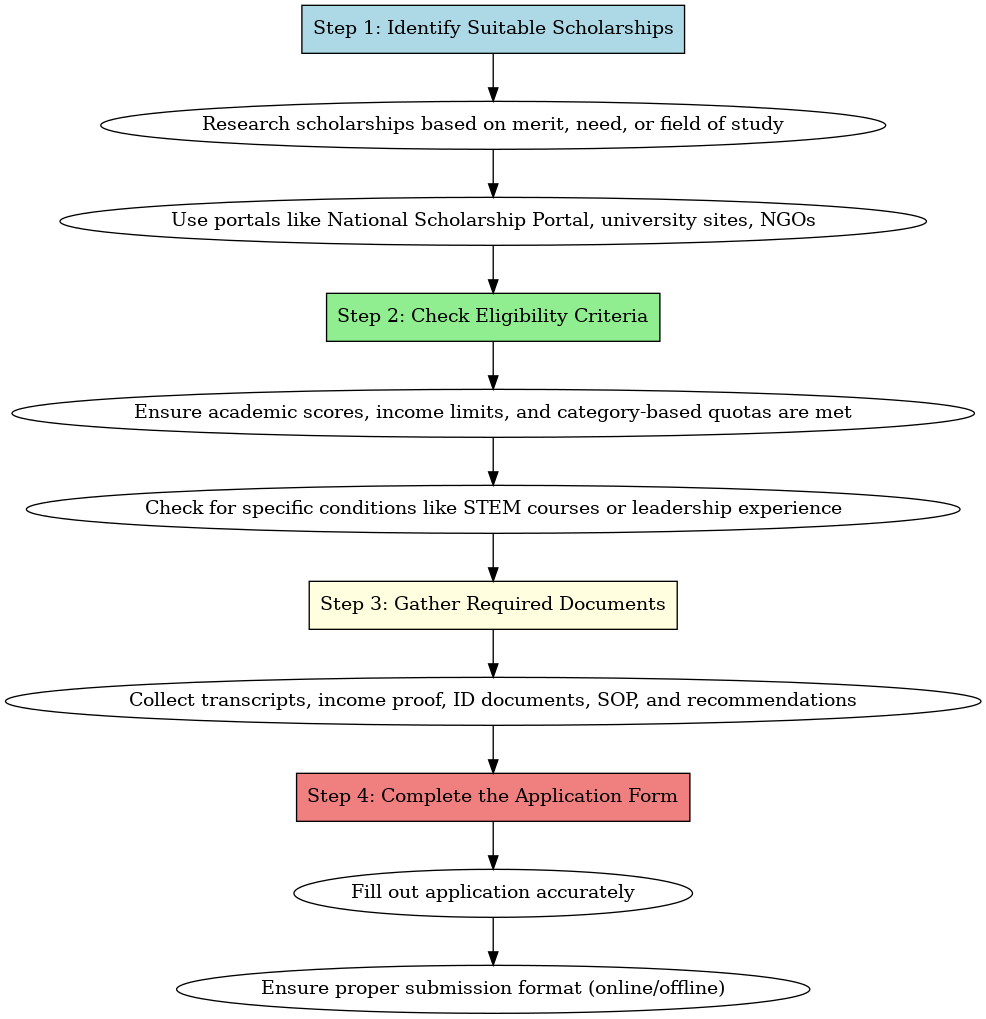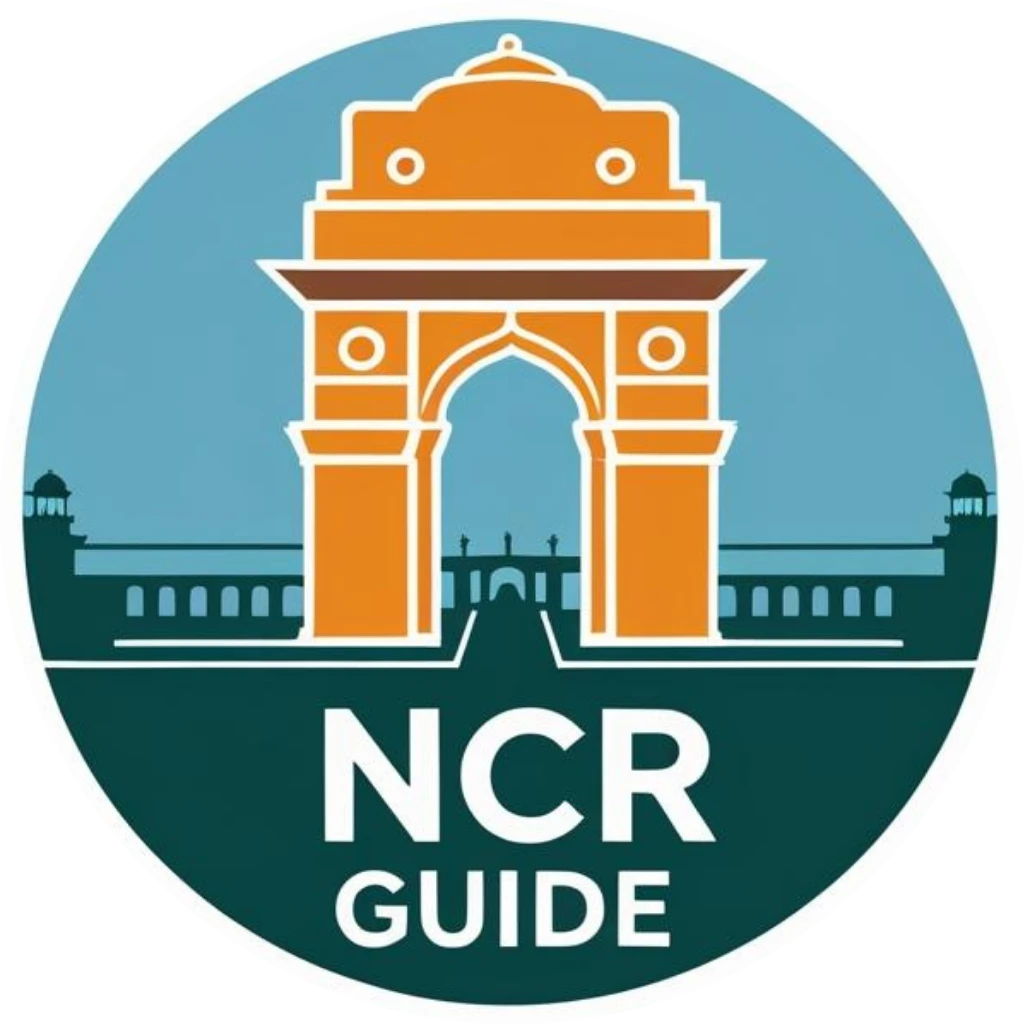Pursuing quality education can be financially challenging, but scholarships and education grants provide crucial support to students from diverse backgrounds. Whether you are a school student, undergraduate, or postgraduate, there are numerous scholarship opportunities available in India and internationally. This guide will walk you through the different types of scholarships, eligibility criteria, the application process, and key tips to improve your chances of securing financial aid.
Types of Scholarships & Education Grants
Recent Scholarships Introduced in 2025
- Atal Bihari Vajpayee General Scholarship Scheme 2025-26 – Offered by the Indian Council for Cultural Relations (ICCR), providing 640 scholarships for international students to study at Indian universities. (Source)
- Lata Mangeshkar Dance & Music Scholarship Scheme 2025-26 – Another ICCR initiative, offering 100 scholarships globally for students pursuing Indian cultural studies, including dance, music, and theatre. (Source)
- Study India Scholarship Program 2025-26 – Provides tuition fee concessions ranging from 25% to 100%, covering over 2,600 courses across various disciplines in more than 160 partner institutes in India. (Source)
- Felix Scholarship 2025 – Supports academically excellent and economically disadvantaged students from India and other developing nations to pursue postgraduate studies in the UK. (Source)
- Chief Minister’s Overseas Scheme for Minorities (Telangana) – Provides financial support up to ₹20 lakhs, plus one-way airfare and visa charges, for minority students from Telangana pursuing higher education abroad. (Source)
- Study Abroad Scholarship for Indian Students 2025 – A financial aid initiative providing scholarships for students pursuing international education in STEM, Humanities, and Business programs. (Source)
- Atal Bihari Vajpayee General Scholarship Scheme 2025-26 – Offered by the Indian Council for Cultural Relations (ICCR), providing 640 scholarships for international students to study at Indian universities. (Source)
- Lata Mangeshkar Dance & Music Scholarship Scheme 2025-26 – Another ICCR initiative, offering 100 scholarships globally for students pursuing Indian cultural studies, including dance, music, and theatre. (Source)
- Study India Scholarship Program 2025-26 – Provides tuition fee concessions ranging from 25% to 100%, covering over 2,600 courses across various disciplines in more than 160 partner institutes in India. (Source)
- Felix Scholarship 2025 – Supports academically excellent and economically disadvantaged students from India and other developing nations to pursue postgraduate studies in the UK. (Source)
- Chief Minister’s Overseas Scheme for Minorities (Telangana) – Provides financial support up to ₹20 lakhs, plus one-way airfare and visa charges, for minority students from Telangana pursuing higher education abroad. (Source)
- Atal Bihari Vajpayee General Scholarship Scheme 2024-25 – Provided by the Indian Council for Cultural Relations (ICCR), offering 638 scholarships for international students to study at Indian universities.
- Reliance Foundation Undergraduate Scholarships 2024-25 – A merit-cum-means scholarship supporting up to 5,000 undergraduate students across various streams in India, offering up to ₹2 lakhs over the duration of their degree program.
- Bharti Airtel Foundation Scholarship Program 2024-25 – A merit-cum-means scholarship fully funding students in technology-based engineering undergraduate and integrated courses at top 50 NIRF-ranked colleges, including IITs.
- PM YASASVI Scholarship Scheme 2024 – A merit-based scholarship for OBC, EBC, and DNT category students in India.
- SBI Asha Scholarship 2024 – A financial aid program for school students from low-income families.
- J N Tata Endowment Loan Scholarship 2024 – Funding for Indian students pursuing higher education abroad.
- Google Generation Scholarship 2024 – A STEM-focused scholarship for female students in India pursuing technology degrees.
1. Merit-Based Scholarships
- Awarded to students with outstanding academic performance.
- Examples:
- National Merit Scholarship Scheme (NMMS) (India)
- KVPY (Kishore Vaigyanik Protsahan Yojana) for science students
- Inlaks Shivdasani Foundation Scholarships for Indian students studying abroad.
2. Need-Based Scholarships
- Designed for students from financially disadvantaged backgrounds.
- Examples:
- Post-Matric Scholarship for Minorities (India)
- EWS Quota-Based Scholarships in private schools
- Central Sector Scheme of Scholarships for College and University Students
3. Government-Funded Scholarships & Grants
- Provided by the central and state governments for various categories.
- Examples:
- National Scholarship Portal (NSP) Scholarships
- State-Specific Education Grants (Delhi, Maharashtra, Tamil Nadu, etc.)
- AICTE Scholarships for Technical Courses
4. Private & Corporate Scholarships
- Sponsored by companies, foundations, and private organizations.
- Examples:
- Tata Scholarship for Indian Students
- Reliance Foundation Scholarships
- HDFC Educational Crisis Scholarship Support
5. International Scholarships for Indian Students
- Offered by foreign universities, governments, or global organizations.
- Examples:
- Fulbright-Nehru Master’s Fellowships (USA)
- Chevening Scholarships (UK)
- Commonwealth Scholarships (Commonwealth countries)
Step-by-Step Guide to Applying for Scholarships

Step 1: Identify Suitable Scholarships
- Research scholarships based on academic merit, financial need, category, or field of study.
- Use official scholarship portals such as:
- National Scholarship Portal
- [University-Specific Scholarship Portals]
- [NGO and Private Organization Websites]
Step 2: Check Eligibility Criteria
- Ensure you meet requirements related to academic scores, income limits, category-based quotas, and citizenship requirements.
- Some scholarships may have specific conditions, such as pursuing STEM courses or leadership experience.
Step 3: Gather Required Documents
- Commonly required documents include:
- Academic transcripts and certificates
- Proof of income (for need-based scholarships)
- Identity documents (Aadhar, Passport, etc.)
- Statement of Purpose (SOP) or Personal Essay
- Letters of Recommendation
Step 4: Complete the Application Form
- Fill out the application accurately and completely, ensuring all required fields are correctly entered.
- Provide detailed answers in essays and personal statements, making them relevant to the scholarship’s goals.
- Ensure the correct submission format (online, offline, via university portals), following the specific instructions given by the scholarship provider.
Common Technical Errors to Avoid in Applications
- Incorrect document formatting – Some scholarships require PDFs instead of Word documents or specific font sizes; always check the formatting guidelines.
- Missing signatures – Digital or handwritten signatures may be required on application forms and recommendation letters.
- Incorrect file naming conventions – Some portals reject files that do not follow specific naming formats (e.g., “Firstname_Lastname_Scholarship.pdf”).
- Incomplete uploads – Many applications are rejected due to missing or corrupt file uploads; double-check each document before submission.
- Not verifying submission confirmation – Ensure that the application has been successfully submitted and that you receive a confirmation email or receipt.
- Fill out the application accurately and completely.
- Provide detailed answers in essays and personal statements.
- Ensure correct submission format (online, offline, via university portals).
Common Mistakes to Avoid in Application Forms

- Misspelling personal details (name, email, contact information), leading to disqualification.
- Providing incomplete or incorrect academic records, which may result in application rejection.
- Skipping mandatory fields or leaving sections blank.
- Uploading incorrect file formats or missing required documents (such as ID proof, transcripts, income certificates).
- Submitting applications past the deadline, making them automatically invalid.
- Using generic or weak responses in personal statements, rather than tailoring them to the scholarship criteria.
- Fill out the application accurately and completely.
- Provide detailed answers in essays and personal statements.
- Ensure correct submission format (online, offline, via university portals).
Step 5: Submit Applications Before Deadlines
- Keep track of multiple scholarship deadlines to avoid missing opportunities.
- Set reminders and double-check documents before submission.
Step 6: Prepare for Interviews (if required)
- Some high-value scholarships conduct interviews or selection rounds.
- Be prepared to discuss your academic goals, career plans, and motivation for applying.
Step 7: Follow Up & Track Application Status
- Regularly check the scholarship portal or email for updates.
- If shortlisted, be ready to provide additional documents or attend interviews.
Common Mistakes to Avoid
How to Craft a Strong Statement of Purpose (SOP) for Scholarships
- Clearly define your goals: Explain why you are applying for the scholarship and how it aligns with your career aspirations.
- Highlight academic and extracurricular achievements: Showcase leadership, research experience, community service, or other relevant skills.
- Make it personal and compelling: Avoid generic statements. Share personal experiences that reflect your passion and motivation.
- Stay concise and structured: Use a clear introduction, body, and conclusion.
- Proofread and edit thoroughly: Ensure there are no grammatical errors or unclear sentences.
Sample SOP Outline for Scholarship Applications
Introduction:
- Briefly introduce yourself and your academic/professional background.
- State the scholarship you are applying for and why it matters to you.
Main Body:
- Academic & Career Goals:
- Explain your long-term academic and career aspirations.
- How will the scholarship help you achieve these goals?
- Achievements & Experiences:
- Highlight academic excellence, research, leadership roles, or extracurricular activities.
- Mention any challenges overcome and lessons learned.
- Why You Deserve the Scholarship:
- Demonstrate financial need (if applicable) and commitment to your field.
- Show how you plan to give back or make a difference with the scholarship.
Conclusion:
- Summarize your key points and reaffirm your enthusiasm for the scholarship.
- End with a strong closing statement that leaves an impression.
- Clearly define your goals: Explain why you are applying for the scholarship and how it aligns with your career aspirations.
- Highlight academic and extracurricular achievements: Showcase leadership, research experience, community service, or other relevant skills.
- Make it personal and compelling: Avoid generic statements. Share personal experiences that reflect your passion and motivation.
- Stay concise and structured: Use a clear introduction, body, and conclusion.
- Proofread and edit thoroughly: Ensure there are no grammatical errors or unclear sentences.
Other Common Mistakes
- Ignoring eligibility criteria and applying for irrelevant scholarships.
- Missing application deadlines due to poor planning.
- Submitting incomplete applications with missing documents.
- Writing weak or generic personal statements that fail to stand out.
- Not preparing for scholarship interviews when required.
- Ignoring eligibility criteria and applying for irrelevant scholarships.
- Missing application deadlines due to poor planning.
- Submitting incomplete applications with missing documents.
- Writing weak or generic personal statements that fail to stand out.
- Not preparing for scholarship interviews when required.
Additional Tips to Increase Chances of Success
- Apply to multiple scholarships to maximize financial aid opportunities.
- Improve academic scores and extracurricular activities to strengthen your application.
- Seek guidance from teachers, mentors, or scholarship consultants.
- Highlight leadership skills, community involvement, and career goals in essays.
hould stay updated on government portals, private scholarships, and university-based financial aid programs to make informed decisions.
Frequently Asked Questions (FAQs)
1. Who is eligible to apply for scholarships in India?
Eligibility criteria vary by scholarship. Common requirements include academic merit, financial need, minority status, category-based reservations, or specialized fields of study.
2. How can I find the right scholarship for me?
You can explore scholarships on National Scholarship Portal (NSP), university portals, government education websites, and private scholarship platforms. Check eligibility before applying.
3. What documents are required for scholarship applications?
Typical documents include academic transcripts, income certificates (for need-based scholarships), ID proof (Aadhaar, Passport), letters of recommendation, and a Statement of Purpose (SOP).
4. Are there scholarships available for Indian students to study abroad?
Yes, various international scholarships exist, such as Fulbright-Nehru Fellowships, Chevening Scholarships, DAAD Scholarships, and Erasmus+ Scholarships.
5. Can I apply for multiple scholarships at the same time?
Yes, students can apply for multiple scholarships, but some programs do not allow recipients to accept more than one award simultaneously. Check each scholarship’s terms.
6. What are the common reasons scholarship applications get rejected?
Common reasons include missing deadlines, incomplete applications, weak SOPs, incorrect document formats, and failing to meet eligibility requirements.
7. Do scholarships cover all educational expenses?
Some fully funded scholarships cover tuition, accommodation, travel, and living expenses, while others may only cover a portion of tuition fees.
8. How do I renew my scholarship for multi-year programs?
Most renewable scholarships require students to maintain a certain GPA, submit progress reports, or reapply annually. Check renewal policies in advance.
9. Are there scholarships specifically for underprivileged students?
Yes, government programs such as Post-Matric Scholarships, EWS Quota Scholarships, and State-Specific Education Grants help financially disadvantaged students.
10. How can I increase my chances of winning a scholarship?
Improve your chances by maintaining strong academic performance, writing a compelling SOP, submitting all required documents, and applying well before the deadline.
Final Thoughts
Applying for scholarships and education grants can significantly reduce the financial burden of education and provide access to better learning opportunities. By researching, preparing strong applications, and meeting deadlines, students can successfully secure funding for their education. Parents and students should stay updated on government portals, private scholarships, and university-based financial aid programs to make informed decisions. Applying for scholarships and education grants can significantly reduce the financial burden of education and provide access to better learning opportunities. By researching, preparing strong applications, and meeting deadlines, students can successfully secure funding for their education. Parents and students should stay updated on government portals, private scholarships, and university-based financial aid programs to make informed decisions.
Managing Scholarship Funds Effectively
Securing a scholarship is just the first step—students should also know how to manage their funds efficiently:
- Create a budget: Allocate the scholarship amount for tuition, books, and living expenses.
- Avoid unnecessary spending: Use funds strictly for education-related expenses.
- Explore investment options: Some scholarships disburse lump sums—consider savings or low-risk investment plans for future academic needs.
- Track fund usage: Keep receipts and records in case reporting is required by the scholarship provider.
- Utilize additional financial resources: Some scholarships allow combining with grants or work-study programs to maximize benefits.
- Plan for renewals and reapplications: Many scholarships require students to maintain a certain GPA or submit progress reports to continue receiving funding. Always check renewal criteria and deadlines.
- Understand tax implications: Some scholarships are tax-exempt, while others may be taxable—verify with the scholarship provider or a financial advisor.
By effectively managing funds, students can ensure their scholarship benefits last throughout their academic journey, reducing financial stress and maximizing educational opportunities. Securing a scholarship is just the first step—students should also know how to manage their funds efficiently:
- Create a budget: Allocate the scholarship amount for tuition, books, and living expenses.
- Avoid unnecessary spending: Use funds strictly for education-related expenses.
- Explore investment options: Some scholarships disburse lump sums—consider savings or low-risk investment plans for future academic needs.
- Track fund usage: Keep receipts and records in case reporting is required by the scholarship provider.
- Utilize additional financial resources: Some scholarships allow combining with grants or work-study programs to maximize benefits.
By effectively managing funds, students can ensure their scholarship benefits last throughout their academic journey, reducing financial stress and maximizing educational opportunities. Applying for scholarships and education grants can significantly reduce the financial burden of education and provide access to better learning opportunities. By researching, preparing strong applications, and meeting deadlines, students can successfully secure funding for their education. Parents and students should stay updated on government portals, private scholarships, and university-based financial aid programs to make informed decisions.
Explore More:
✔ Best Budget-Friendly Private Schools in Delhi NCR
✔ Government Policies on School Fee Regulation in India
✔ Private School Fee Hike in Delhi NCR – What It Means for Parents & Students
References & Further Reading:
- National Scholarship Portal (NSP) – Official platform for Indian government scholarships.
- Ministry of Education, Government of India – Updates on education policies and scholarship programs.
- Fulbright-Nehru Fellowships – US-India exchange program for Indian students.
- Chevening Scholarships – UK government’s fully funded scholarship program.
- DAAD Scholarships – Funding opportunities for Indian students pursuing education in Germany.
- Erasmus+ Scholarships – EU scholarships for Indian and international students.
- Studyportals Scholarship Database – Global platform listing scholarships for various study destinations.
- National Scholarship Portal (NSP) – Official portal for Indian government scholarships.
- Ministry of Education, Government of India – Updates on education policies and scholarship programs.
- Central Board of Secondary Education (CBSE) – CBSE-affiliated scholarships and financial aid opportunities.
- Fulbright-Nehru Fellowships – US-India exchange program for Indian students.
- Chevening Scholarships – UK government’s scholarship program for global scholars.
- Commonwealth Scholarships – Financial aid for Indian students studying in Commonwealth nations.
- Scholarships.com – Global database of scholarships for undergraduate and postgraduate students.
- DAAD Scholarships – Funding opportunities for Indian students pursuing education in Germany.
- Erasmus+ Scholarships – European Union’s scholarship program for Indian and international students.
- International Education Financial Aid (IEFA) – A directory for international students looking for financial aid options.
- Studyportals Scholarship Database – A platform listing scholarships available for international students worldwide.
- National Scholarship Portal (NSP) – Official portal for Indian government scholarships.
- Ministry of Education, Government of India – Updates on education policies and scholarship programs.
- Central Board of Secondary Education (CBSE) – CBSE-affiliated scholarships and financial aid opportunities.
- Fulbright-Nehru Fellowships – US-India exchange program for Indian students.
- Chevening Scholarships – UK government’s scholarship program for global scholars.
- Commonwealth Scholarships – Financial aid for Indian students studying in Commonwealth nations.
- Scholarships.com – Global database of scholarships for undergraduate and postgraduate students.
- DAAD Scholarships – Funding opportunities for Indian students pursuing education in Germany.
- Erasmus+ Scholarships – European Union’s scholarship program for Indian and international students.

